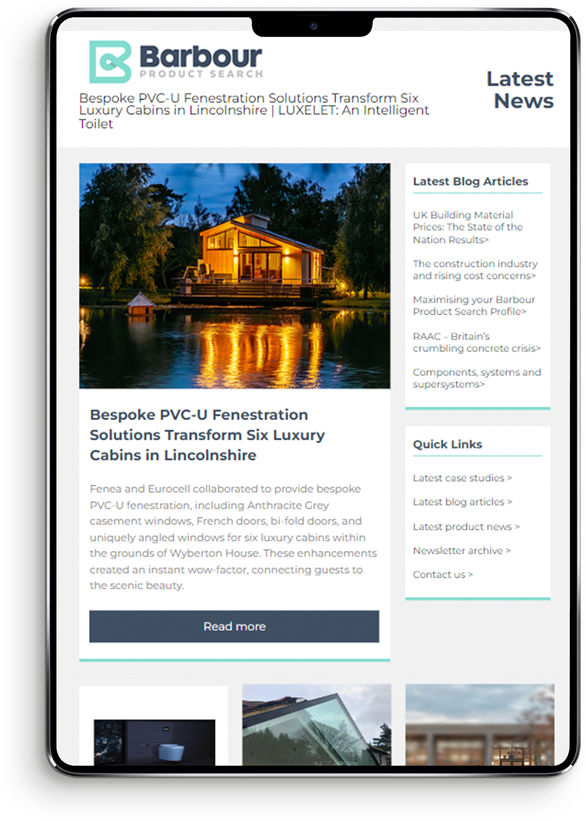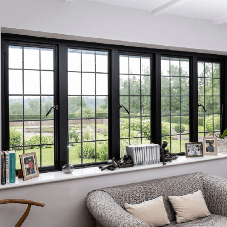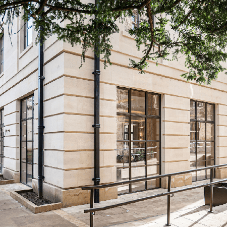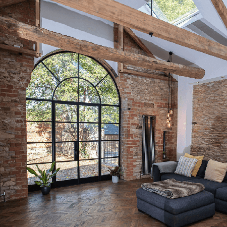When an iconic name announces that it’s having a rebrand, there is always the fear that customers will react negatively – remember when Royal Mail decided that ‘Consignia’ best described its activities, changed its name and received howls of derision for its pains?
If you don’t remember that, it’s probably because Royal Mail reversed its decision pretty damn quick. Though not as quickly as US clothing firm Gap, who changed its long-established logo then back again within six days due to public pressure.
Steel window and door manufacturer Crittall has just announced a logo change after many years with its familiar ‘blue pyramid’ graphic. However, as befits a company that is a byword for strength, reliability and instantly recognisable design, the new logo pays homage to the brochures and newspaper adverts featuring Crittall products that were produced in the Art Deco period of the 1930s.
Yet it also feels fresh, clean and timeless. As Crittall managing director Russell Ager said, the logo is “a subtle but important evolution. It draws inspiration from past designs while providing a modern identity that reflects where Crittall is today and where we’re heading.”
In other words, Crittall is assuring us that it is a safe pair of hands equally unafraid to innovate and respond where necessary to changing customer tastes, moving forward with clarity while remaining rooted in its origins. A natural progression, then, for a business that for 175 years has stayed true to its founding values while quietly shaping the built environment.
This longevity, combined with an aesthetic that is instantly recognisable, much sought-after and (sadly) much imitated, is a core reason for Crittall’s ongoing success. The firm’s story began in 1849 in Braintree, Essex, when Francis Berrington Crittall took over an ironmonger’s shop. His son, Francis Henry Crittall, later introduced the use of steel for windows; a decision that would change the direction of British fenestration and influence global architecture. At a time when timber was the default, steel offered strength, slim sightlines and the potential to bring more light into buildings.
By the early 20th century, Crittall had become synonymous with steel windows. Its products were found in homes, schools, public institutions and industrial buildings across Britain and beyond. Architects appreciated the technical advantages; clients admired the appearance. These windows didn’t merely serve a function – they helped define a new architectural language.
What followed was growth, diversification and a period of critical national service. During both World Wars, Crittall’s factories supported the war effort by producing vital materials including Bailey bridges, aircraft parts and windows for military buildings.
Equally significant was the company’s social ambition. In 1926, Francis Henry Crittall founded Silver End, a model village near Witham, Essex. It was designed to provide high-quality housing for employees and their families, with modern homes, public amenities and generous green space. It remains a rare example of a business taking real responsibility for the lives of those who worked within its walls.
Through every chapter, from the industrial optimism of the interwar years to the challenges and consolidations of the post-war period, Crittall has remained a manufacturer of purpose-built, high-performance products. Today, it continues to produce steel windows and doors in Witham, combining traditional craft with modern manufacturing and technical excellence at their state-of-the-art factory, opened in 2007.
Although design tastes and building standards have evolved, Crittall’s commitment to quality has remained unchanged. Modern products incorporate enhanced thermal performance, weather resistance and acoustic control, meeting today’s regulations without compromising the refined proportions that define a Crittall window or door. It is this balance that appeals to architects working on projects as varied as heritage restorations, minimalist new-builds and commercial developments.
Importantly, the Crittall name continues to mean something. It is not a ‘type’ or a ‘style’ – it is a trademark, built on engineering integrity and careful attention to detail. While others borrow the aesthetic, they cannot replicate the underlying performance or the accumulated knowledge behind it. Crittall products are made of steel, not aluminium. They are specified by professionals who understand the difference and value the result.
The company’s approach to brand protection reflects this. Crittall actively defends its name against misuse, not from a position of nostalgia but to preserve the integrity of a product that has been honed over generations. Clients deserve to know they are choosing genuine Crittall – not a copy, not an imitation, but the original.
As the business looks to the future, it does so with a clear sense of direction. Investment in technology continues, not for its own sake, but to improve service, efficiency and performance. The reworked logo is a visual reflection of this ongoing evolution; a clean, confident mark that respects the brand’s past while supporting its plans for the next decade.
Few manufacturers can point to a history of this length and impact. Fewer still can say they are as relevant today as they were at their peak. From the ironmonger’s shop in Braintree to landmark buildings across the world, Crittall has never stood still. And as the updated identity takes its place in the built environment, it serves as a reminder that while the form may adapt, the essence remains – Crittall’s products are built to last.
A modern chapter in steel: Crittall’s legacy and future direction
| T | 01376 530800 |
|---|---|
| E | hq@crittall-windows.co.uk |
| W | Visit Crittall Windows's website |
| Francis House, Freebournes Road, Witham, CM8 3UN |
Categories
Windows Conservatories Residential buildings Steel windows




